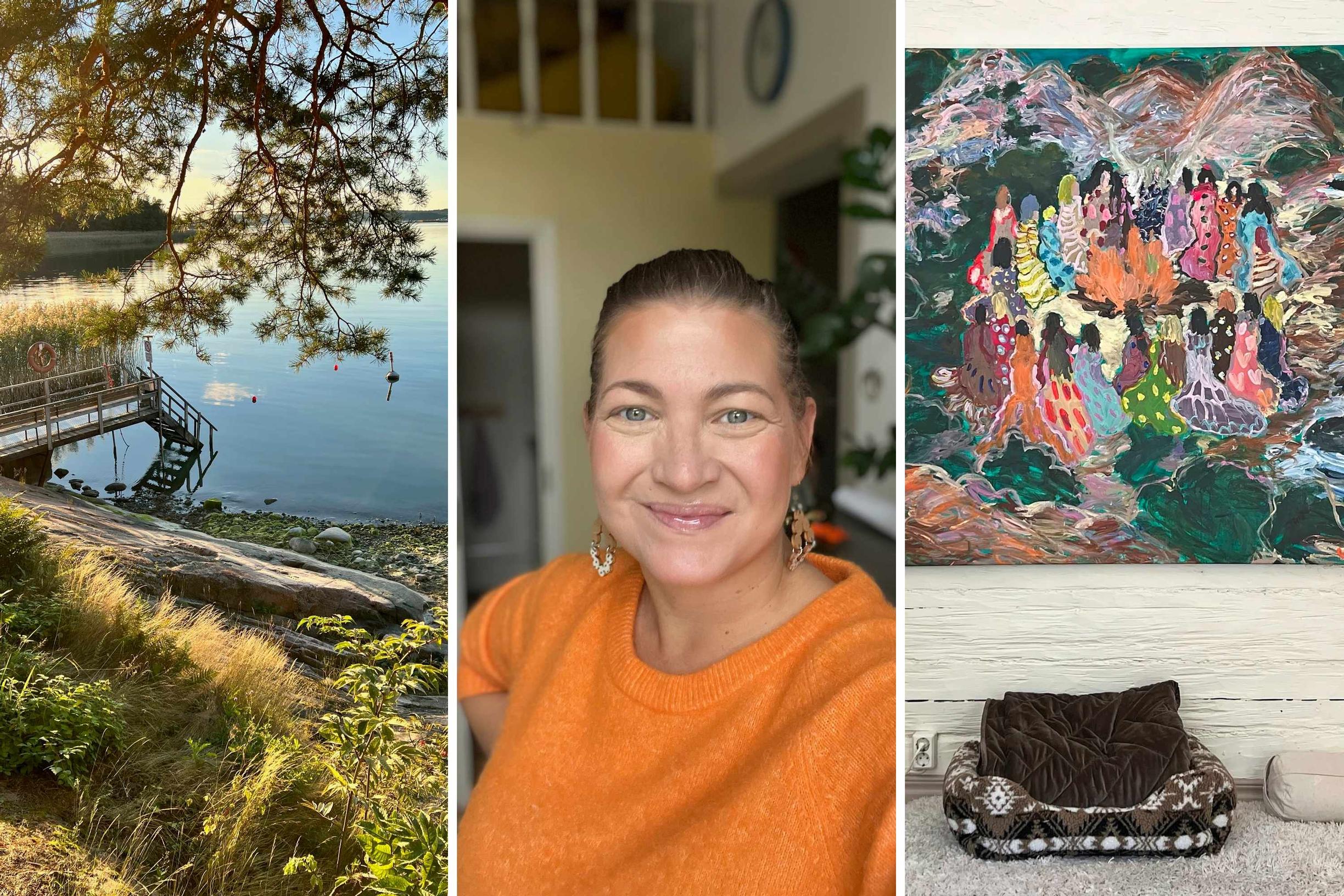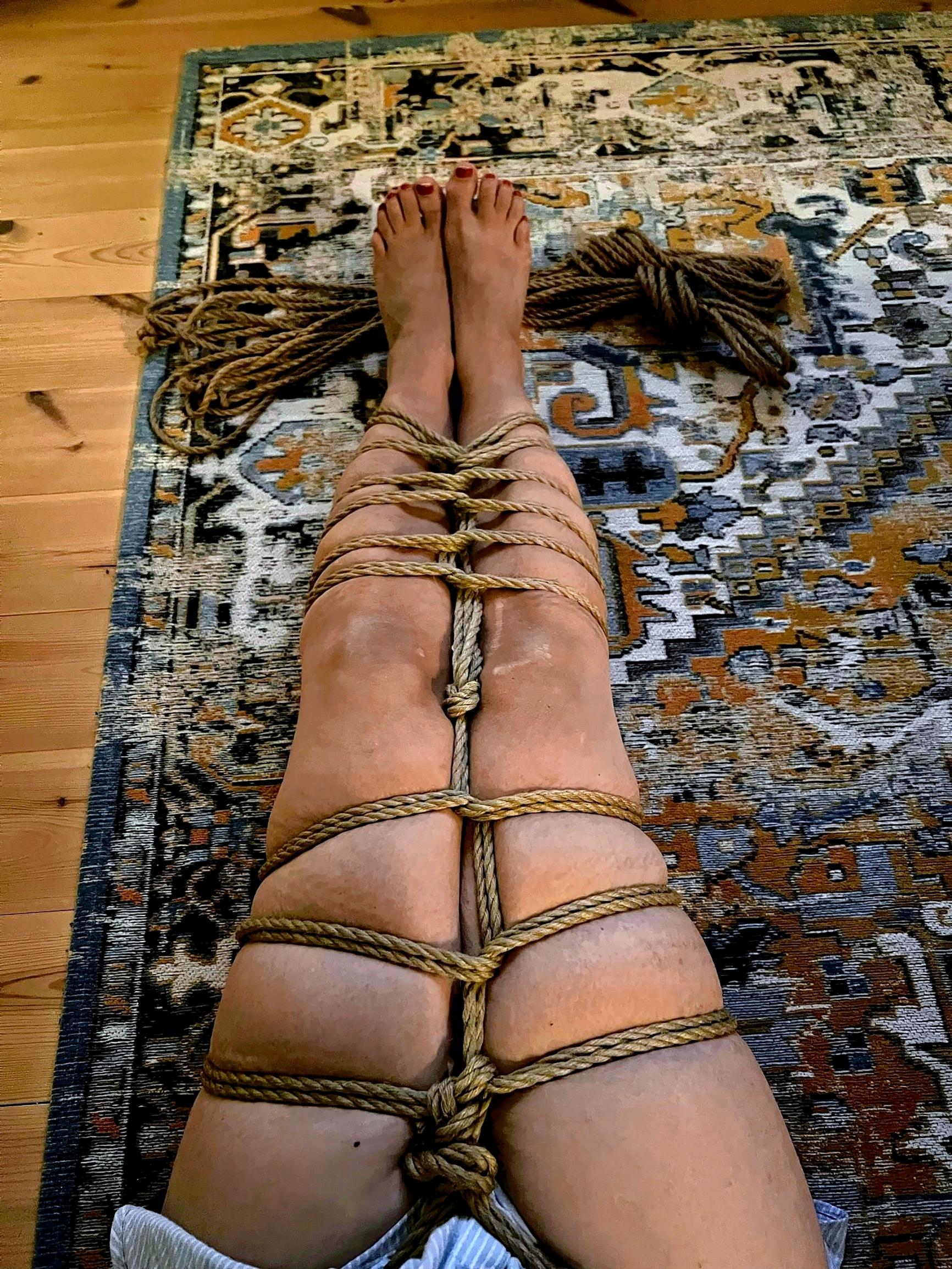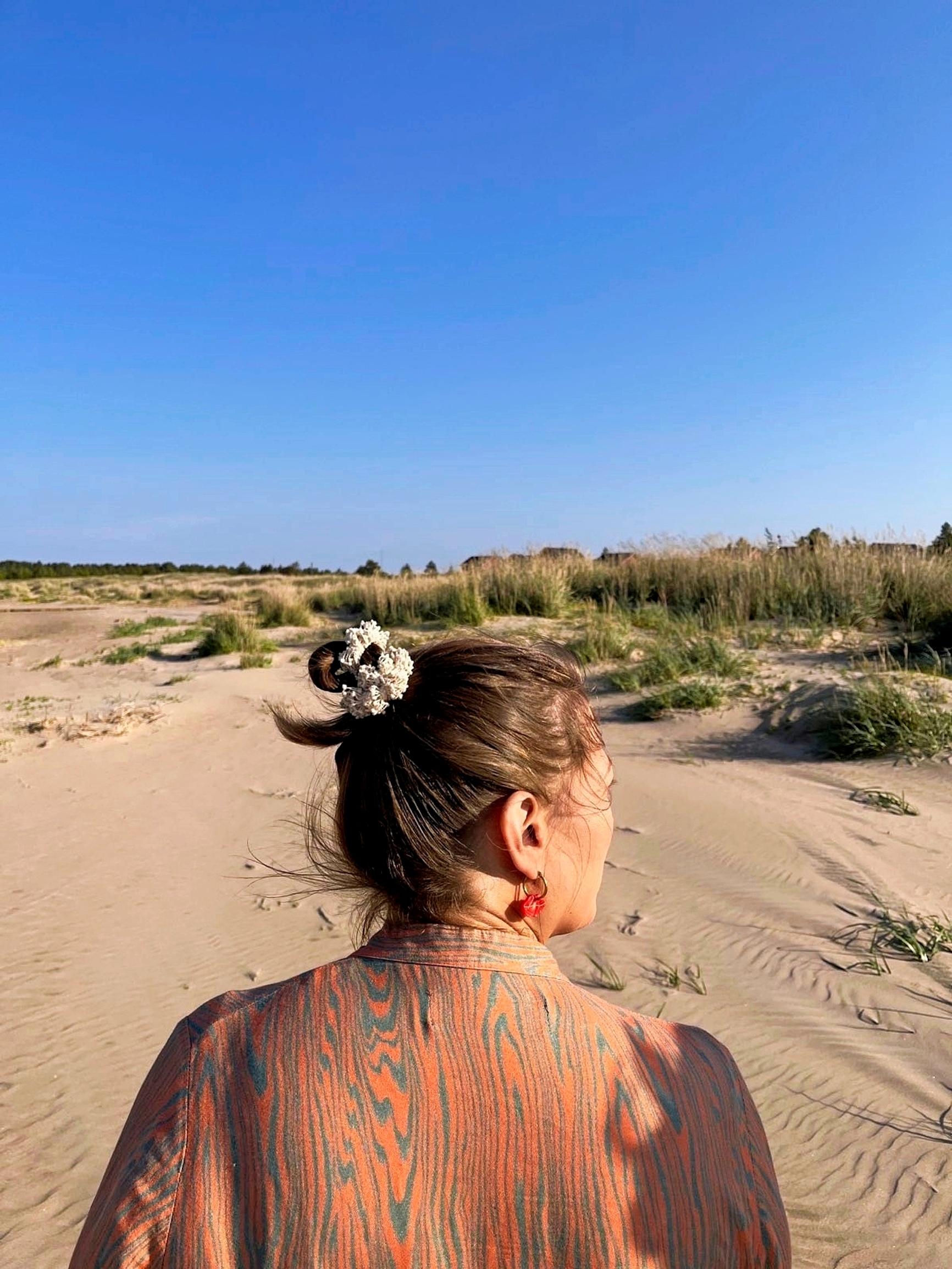
After her divorce, tantra changed Tanja’s life: “Tantra sparked the change I had long been seeking after my crisis”
The divorce left 42-year-old Tanja Pohjankoski staying at home and avoiding people. Thanks to tantra, she learned how to speak up about her needs and cope with difficult emotions.
The instructor advises us to look each other in the eye and try to align our breathing. I feel awkward. I’m sitting on the floor facing my partner, and I’m tempted to look away. Maybe I can still leave?
Gradually, I start to relax. I sense my partner accepts me just as I am. I feel safe and supported. It’s early 2024, and I’m at my first tantra course, where I’ve just completed my first exercises.
“I want to look away, but gradually I start to feel more at ease. I sense that I am safe and supported.”
Tantra is a method for expanding awareness. It teaches you to live in the present moment and to enjoy life through all your senses.
In my case, tantra sparked the transformation I’d been seeking ever since my crisis. Two years earlier, I had gotten divorced and found myself stuck at home. For a year, I felt like I didn’t want to see anyone. I took in three cats that kept me company when the children spent alternate weeks with their other parent.
My wife and I had been together for 15 years. Over time, I began longing for connection with other people, but first I felt I needed to rediscover myself after such a long relationship.
I realized I didn’t want to keep sabotaging my relationships. At first, I tried to analyze my thoughts and emotions logically. I wanted to act differently from what I was used to, but just deciding wasn’t enough. My emotions were rooted deep in my body, which felt locked.
In arguments, my nervous system responded the way it had learned: I would either freeze or lash out. I struggled to identify and express my feelings or needs, so I preferred to avoid conflicts. I wanted a relationship where I could state my needs and boundaries. I no longer wanted to feel unsafe and on guard; instead, I wanted to learn to trust and be present.
I had to take responsibility for my actions. Where and how could I practice a new way of being?
My first step was to quit drinking alcohol. That was a major turning point, as I used to drink both in good times and bad. Even one glass helped me avoid facing my feelings.
In addition to working through my emotions, I also wanted to reclaim my sexuality, pleasure, and body. I attended a shibari course, where we practiced tying our own bodies with ropes. It felt like a calming meditation, because focusing on it forced me to be present. For me, bondage was about exploration—learning to hear my needs. Sometimes I tied myself softly with pretty knots; other times, I used more intense, tight bindings that could cause pain. I observed which feelings arose in me.
I also took an expensive online course to explore my pelvic floor and vagina. I hoped for more pleasure and mind-blowing orgasms, and I knew that could be learned. During the course, I realized I was numb physically and emotionally. Since I couldn’t pinpoint my feelings, it was hard to sense any sexual energy in myself. I still didn’t find the support I needed.

The purpose of tantra is to learn self-expression—physically, emotionally, and in connection with others. It’s a path of self-development and spiritual growth that removes learned roles and masks.
This is how psychotherapist and tantra instructor Kirsti Kuosmanen describes it on her website, which I discovered in early 2024.
I signed up immediately for a three-day tantra course. I didn’t know anyone there, and that actually made me feel more at ease. It felt safer to explore my emotions and be vulnerable among strangers than with those close to me. I was afraid people close to me might reject me.
I was also initially afraid of the exercises. We practiced guided activities alone, in pairs, and in groups. Gradually, I relaxed, my trust grew, and my shame subsided. It helped that no one knew what I specifically found difficult. I had the chance to reinvent myself.
For me, tantra was primarily an inward journey. The most powerful exercise was dancing through different emotions. I had done something similar before in a psychophysical therapy group, but at that time it felt awful because of my intense shame.
This time, I decided to try again. Initially, I moved just a bit, but soon I could let go. I wasn’t performing anymore; I let the emotions flow freely. I danced in my own bubble.

Soon, I became a regular at weekend tantra courses in Tammisaari, Finland. I spent my winter vacation at a retreat in Bali. I still regularly attend various workshops in Turku.
Tantra helped me overcome shame, and I feel that breakthrough in everything I do now. I used to spend a lot of time worrying about other people’s opinions because of my shame. Through different exercises, I managed to work past it.
At one event, we tackled anger in a partner exercise. The instructor demonstrated movements that might awaken and release anger.
At first, I was skeptical. But when I closed my eyes and pressed my hands together, anger rose and finally burst out in deep sobbing. The instructor reminded me that if I felt I’d gone too deep, I could return to the present, open my eyes, and see my partner watching me all along. It was wonderful to notice how accepting and loving my partner’s gaze was. No one had ever seen that side of me before.
I did the most work on shame in an exercise where I stood in the center of a circle. Each participant had 15 minutes to do whatever they wanted.
My stomach was really bloated, which has always embarrassed me. So I took off my shirt, showed my stomach, and burped. Sometimes I wondered what the others thought of me, but in the end, it wasn’t so hard to stand there. I still felt shame, but I recognized it and faced it instead of avoiding it.

Over the past couple of years, tantra has greatly improved my day-to-day life. It has especially changed how I relate to myself and others.
Before, my life was all about control, planning, and constant achievement. My need for control showed up in moments when my partner spontaneously asked me to play badminton. I wouldn’t go, because the invite came too quickly. I had to know about any plans well in advance so I could be prepared.
I’ve always been a high achiever at school, in sports, and at work. Achieving made me feel accepted.
Before, I also found it difficult to trust others. I built a defensive wall so no one could see my weaknesses, failures, or struggles, and I never let anyone truly in. Now I have more faith in life and in people. I fear abandonment less, and I no longer try to be someone I’m not. When I leave the house, I don’t immediately worry about whether I’m enough in others’ eyes. And if someone rejects me, I don’t take it so personally.
Tantra has taught me to slow down. I used to rely on my head for every decision, but now I also listen to my heart and intuition. I’m learning to sense what’s going on inside me and facing my feelings head-on.
I communicate differently now. I know what I need, and I’m not afraid to say it. I’m more honest about what I really think. I’m also more compassionate toward others and better at understanding why they behave the way they do. I realize it may have nothing to do with me.
I used to hover in the back row at yoga and BodyBalance classes, but now I pick a spot up front. I even went to a commercial dance class, which I’d never have done before. My new motto is to dance like no one’s watching, but do it so everyone can see.
“I snuggle up to the person next to me. Someone strokes my hair and my back.”
Tantra has also nurtured my sexuality. I now recognize the flow of sexual energy in me—something I wasn’t aware of before.
Tantra can include physical touch—like stroking, cuddling, and massage—but we always ask for permission. Consent is central to tantra. We spend a lot of time practicing how to identify and articulate boundaries. I’ve been to events where sex was possible, but it was never the primary focus.
I’ve realized that for me, sexuality also means creativity, joy, and vitality. Now that I understand myself, I can say what I want. I feel good about my body and enjoy it in many ways. I treat myself gently without needing a partner. I also feel more open to dating or a relationship than before.
At the end of the tantra course, I lie on a mattress close to the other participants. I curl up against the person next to me, gently stroking their hand. Someone else strokes my hair and my back. I hear soft conversation in the background.
I love cuddle piles like these. It’s wonderful to surrender to a moment where someone touches me without wanting anything in return. That’s when I feel perfectly fine just as I am.
Tanja’s tips for recovering from a divorce
- Seek out therapy or coaching where you can explore who you are. This strengthens your connection to both yourself and others.
- Learn to recognize what truly brings you satisfaction. Take the time to figure out what you really want.
- Dance like no one’s watching, but do it so everyone can see. It’s a great way to release shame.


